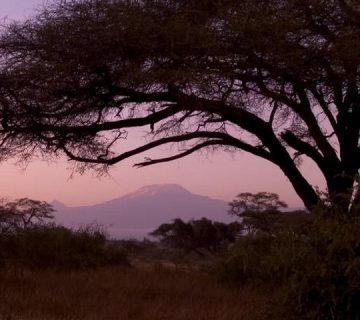Discover the Vibrant Ecosystem of Mount Kilimanjaro: A Comprehensive Flora and Fauna Guide
Explore the breathtaking ecosystems of the iconic Mount Kilimanjaro with us, Kilimanjaro Centre for Trekking and Ecotourism – KCTE. Known not only for its towering peak and challenging treks but also for its lush biodiversity, Kilimanjaro is a paradise for nature lovers and adventurers alike. In this guide, we will take you through an inspirational journey across the various ecological zones of Kilimanjaro, unveiling the rich tapestry of life that thrives on Africa’s highest mountain.
Why Explore Kilimanjaro’s Natural Bounty?
Mount Kilimanjaro is more than just a climbing challenge; it’s a vibrant ecosystem set against the backdrop of breathtaking landscapes. From dense rainforests to alpine meadows, and from volcanic craters to icy glaciers, each altitude presents a unique ecological world waiting to be discovered. Understanding the flora and fauna of Kilimanjaro not only enriches your climbing experience but also deepens your connection with nature, ensuring that your trek becomes a memorable and respectful encounter with Earth’s wonders.
The Forests at the Foot: A Gateway to Diversity
The Lush Montane Forests
As you begin your ascent, the first ecological zone you’ll encounter is the lush montane forests that cloak Kilimanjaro’s lower slopes. This dense green belt is rich with towering trees such as the Strangler Fig and Yellowwood. Listen to the symphony of the forest, where the Blue Monkey and the rare Colobus Monkey chatter and swing from the canopies. The air is thick with the calls of over 180 bird species, including the Turaco and the Hornbill whose vibrant colors are as captivating as the forest itself.
Flowers and Foliage
The undergrowth is just as lively with an array of wildflowers and plants. During the wet season, the ground is speckled with the vibrant hues of Impatiens Kilimanjari and the unique Red-hot Poker, creating a painterly scene that nature enthusiasts will cherish.
Climbing Higher: Heath and Moorland
Transitioning from the wet montane forests, the landscape opens into the heath and moorland zone. This area is characterized by lower temperatures and peculiar vegetation such as the Giant Heather draped with moss, lending the terrain an almost mythical ambiance.
Fauna Among the Heather
This zone may seem less biodense at first glance, but patient observers might spot the Elands or the occasional leopard. The air here buzzes with the activity of unique insects and the resilient Alpine Chat, a bird species that has made a home in this less hospitable climate.
The Alpine Desert: Beauty in Barrenness
Above 4,000 meters, the lush greens give way to the stark, breathtaking expanses of the alpine desert. Here, the temperatures can swing dramatically, and the plant life is sparse but fascinating.
Survival of the Fittest
In this zone, only the toughest flora survive. The remarkable Giant Groundsel and Lobelia deckenii tower surreal against the rocky backdrop, storing water in their thick, fleshy leaves to survive the arid conditions.
The Summit: A Frozen World
Reaching over 5,000 meters, the summit of Kilimanjaro is where you encounter the final ecological zone – the arctic zone. The vegetation here is nearly nonexistent, but the few mosses and lichens that cling to life are a testament to the resilience of nature.
The Silent Witnesses
While fauna is sparse at this altitude, the sight of a soaring Lammergeier vulture or a hardy Alpine Swift can be a rewarding experience for those who make it to these heights.
Protecting Kilimanjaro’s Ecology
Exploring Kilimanjaro’s diverse ecosystems is a privilege that comes with responsibility. At KCTE, we emphasize sustainable tourism practices to ensure that the mountain’s natural beauty and biodiversity are preserved for generations to come. We encourage all climbers to respect the delicate balance of Kilimanjaro’s environments.
Why Choose Kilimanjaro Centre for Trekking and Ecotourism (KCTE)?
Choosing the right tour operator is crucial for a fulfilling Kilimanjaro experience. At KCTE, we pride ourselves on being expert guides not only in navigating the mountain but in understanding and respecting its natural habitats. Our guided tours are designed to ensure you enjoy the full splendor of Kilimanjaro’s flora and fauna while adhering to the highest safety and ecological standards.
Frequently Asked Questions
What is the best time of year to see wildlife on Kilimanjaro?
The best wildlife viewing is during the wet season (March to May and November to December) when the montane forests are full of life.
Are there any endangered species on Kilimanjaro?
Yes, species such as the Kilimanjaro Colobus Monkey are considered vulnerable and are a rare sight that underscores the importance of conservation efforts.
What should I carry for the best nature watching experience on Kilimanjaro?
Bring binoculars, a camera with a good zoom lens, and a field guide to East African plants and animals to enhance your observation opportunities.
Can I interact with the animals on Kilimanjaro?
Interactions should be limited to observation from a safe distance to avoid disturbing the natural behavior of the wildlife.
Conclusion: Your Adventure Awaits!
Ready to explore the awe-inspiring biodiversity of Mount Kilimanjaro? Join us at Kilimanjaro Centre for Trekking and Ecotourism for an adventure that transcends the ordinary. From the mystical montane forests to the serene summit glaciers, let us guide you through an unforgettable journey across Kilimanjaro’s unique ecological zones. Book your climb today and take the first step towards a truly transformative experience!
Let the mountain call you. Are you ready to answer? Visit us at KCTE to embark on your Kilimanjaro adventure—a journey where every step counts!




